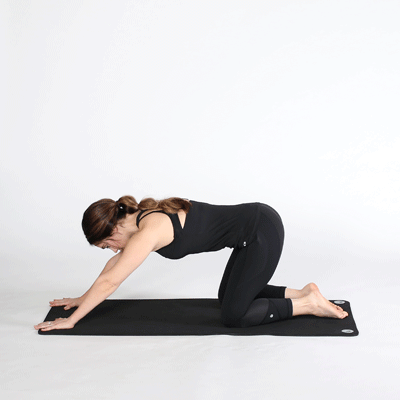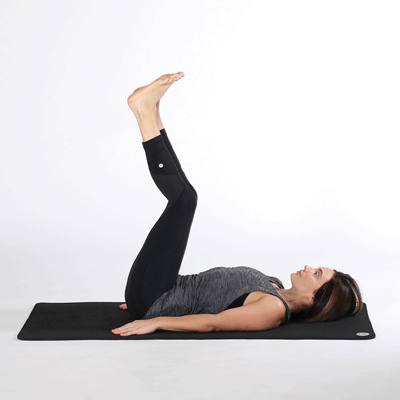12 Yoga Poses for Neck Pain
Neck pain is extremely common and may be caused by several factors. These include daily activities that involve repetitive forward movement patterns, poor posture, or the habit of holding your head in one position.
It doesn’t take a lot to develop pain in this area of your body, and it’s easy for that pain to extend to your shoulders and back. Neck pain can lead to headaches and even injury.
Practicing yoga is an excellent way to get rid of neck pain. At least one study found yoga to provide pain relief and functional improvements for people who did yoga for nine weeks. Through practice, you can learn to release any tension you’re holding in your body.
Yoga may be useful in treating even chronic neck pain.
12 Yoga Poses for Neck Pain
Poses for relief
Here are some of the yoga poses that may be beneficial in relieving neck pain.
Standing forward bend pose

- Come into a standing position with your feet under your hips.
- Lengthen your body as you fold your upper body forward, keeping a slight bend in your knees.
- Bring your hands to your legs, a block, or the floor.
- Tuck your chin into your chest, and let your head and neck fully relax.
- You can gently shake your head from side to side, front to back, or make gentle circles. This helps to release tension in your neck and shoulders.
- Hold this position for at least 1 minute.
- Bring your arms and head up last as you roll your spine up to standing.
Also Read: Relieve Lower Back Pain With These 8 Simple Stretches
Warrior II pose

Warrior II allows you to open and strengthen your chest and shoulders to support your neck.
- From standing, bring your left foot back with your toes facing out to the left at a slight angle.
- Bring your right foot forward.
- The inside of your left foot should be in line with your right foot.
- Bring up your arms until they’re parallel to the floor, with your palms facing down.
- Bend your right knee, being careful not to extend your knee further forward than your ankle.
- Press into both feet as you extend up through your spine.
- Look out past your right fingertips.
- Remain in this pose for 30 seconds.
- Then do the opposite side.
Extended triangle pose

Triangle pose helps to relieve pain and tension in your neck, shoulders, and upper back.
- Jump, step, or walk your feet apart so that they’re wider than your hips.
- Turn your right toe forward and your left toe out at an angle.
- Bring your arms up so they’re parallel to the floor with your palms facing down.
- Reach forward with your right arm as you hinge at your right hip.
- From here, lower your right arm and lift your left arm toward the ceiling.
- Turn your gaze in any direction or you can do gentle neck rotations looking up and down.
- Remain in this pose for 30 seconds.
- Then do it on the other side.
Cat cow pose

Flexing and extending the neck allows for the release of tension.
- Begin on all fours with your hands under your shoulders and your knees under your hips.
- On an inhale, allow your belly to fill with air and lower toward the floor.
- Look up at the ceiling as you let your head drop back slightly.
- Keep your head here or lower your chin slightly.
- On an exhale, turn to look over your right shoulder.
- Hold your gaze here for a few moments and then return to center.
- Exhale to look over your left shoulder.
- Hold that position before returning to the center.
- From here, tuck your chin into your chest as you round your spine.
- Hold this position, letting your head hang down.
- Shake your head from side to side and forward and backward.
- After these variations, continue the fluid motion of the cat-cow pose for at least 1 minute.
Thread the needle pose

his pose helps to relieve tension in your neck, shoulders, and back.
- Start on all fours with your wrists under your shoulders and your knees under your hips.
- Lift your right hand and move it over to the left along the floor with your palm facing up.
- Press your left hand into the floor for support as you rest your body on your right shoulder and look over to the left.
- Remain in this position for 30 seconds.
- Slowly release, sink back into Child’s Pose (see below) for a few breaths, and repeat on the other side.
Also Read: Ways to Avoid Muscle Cramps
Cow face pose
The cow face pose helps to stretch and open your chest and shoulders.
- Come into a comfortable seated position.
- Raise your left elbow and bend your arm so your hand comes to your back.
- Use your right hand to gently pull your left elbow over to the right, or bring your right hand up to reach and hold your left hand.
- Remain in this pose for 30 seconds.
- Then do it on the other side.
Half lord of the fishes pose

This twist stretches the spine, shoulders, and hips.
- From a seated position, bring your right foot along the floor to the outside of your left hip.
- Bend your left knee and cross it over your right leg so that your left foot is “rooted” into the floor to the outside of your right thigh.
- Lengthen your spine and then twist your upper body to the left.
- Place your left hand on the floor behind your buttocks.
- Bring your right arm to the outside of your left leg.
- Turn your head to look over either shoulder or do gentle neck movements forward and backward.
- Stay in this pose for 1 minute.
- Then do it on the opposite side.
Sphinx pose

The sphinx pose strengthens your spine and stretches your shoulders.
- Lie down flat on your stomach with your elbows under your shoulders, pressing into your palms and forearms.
- Tighten your lower back, buttocks, and thighs to support you as you lift your upper torso and head.
- Keep your gaze straight ahead and make sure you’re lengthening your spine.
- Hold this pose for 2 minutes.
Extended puppy pose

This pose is great for relieving stress and stretching your back and shoulders.
- Begin on all fours with your wrists directly below your shoulders and your knees directly under your hips.
- Walk your hands forward slightly and lift your heels to come up onto your toes.
- Slowly bring your buttocks down toward your heels, stopping halfway down.
- Engage your arms and keep your elbows lifted.
- Rest your forehead on the floor or a blanket.
- Allow your neck to fully relax.
- Keep your lower back slightly bent as you press into your palms, stretching your arms, and drawing your hips down toward your heels.
- Hold for 1 minute.
Child’s pose

A child’s pose can help to relieve neck pain as well as a headache.
- From a kneeling position, sit back on your heels and bring your knees to a comfortable position.
- Lengthen your spine and walk your hands in front of you, hinging your hips so that you can fold forward.
- Keep your arms extended in front of you to support your neck, or you can stack your hands and rest your head on them. This may help to relieve headache tension. If it’s comfortable, bring your arms back to lie along the side of your body.
- Breathe deeply and focus on letting go of any tension or tightness you’re holding in your body.
- Rest in this pose for a few minutes.
Also Read: Knee pain when bending
Legs-up-the-wall pose

This restorative pose has amazing healing potential and can help to relieve tension in your back, shoulders, and neck.
- From a seated position, scoot forward on your hips toward a wall. When you are close to the wall, lie back and swing your legs up and against the wall.
- You can place a folded blanket or pillow under your hips for support.
- Bring your arms into any comfortable position.
- You may wish to gently massage your face, neck, and shoulders.
- Stay in this pose for up to 20 minutes.
Corpse pose

Allow yourself time at the end of your practice to relax in corpse pose. Focus on letting go of any remaining stress and tension in your body.
- Lie down on your back with your feet a little wider than your hips and your toes splayed out to the side.
- Rest your arms alongside your body with your palms facing up.
- Adjust your body so that your head, neck, and spine are aligned.
- Focus on breathing deeply and releasing any tightness in your body.
- Remain in this pose for at least 5 minutes.
General tips
Since these poses are designed to treat a specific ailment, you must follow these tips:
- Remember that your body changes from day to day. Make adjustments to your practice as necessary and avoid poses that cause pain or discomfort.
- Allow your breath to guide your movement so that you’re moving slowly and with fluidity.
- Only go to your edge — don’t push or force yourself into any position.
- If you’re new to yoga, try to take a few classes at a local studio. If this isn’t possible, you can do guided classes online.
- Hatha, yin, and restorative yoga are beneficial for reducing neck pain. Unless you’re experienced, it’s best not to do fast, powerful yoga.
- Be easy and gentle with yourself. Enjoy the process and the practice, and meet yourself at whichever point you find yourself daily.
- Focus on doing at least 10 to 20 minutes of yoga per day, even if it’s only to relax in a few restful positions.
- Be mindful of your posture throughout the day.
When to see a doctor
If you’ve taken steps to relieve neck pain and it’s not getting better, or if your pain becomes worse or severe, see your doctor. Neck pain that’s accompanied by numbness, loss of strength in the arms or hands, or a throbbing pain in the shoulder or under the arm are also signs you should see your doctor.
Your doctor can help to determine if there are any underlying reasons for the pain. They may recommend a certain treatment program that you should follow. They may also refer you to a physical therapist.



